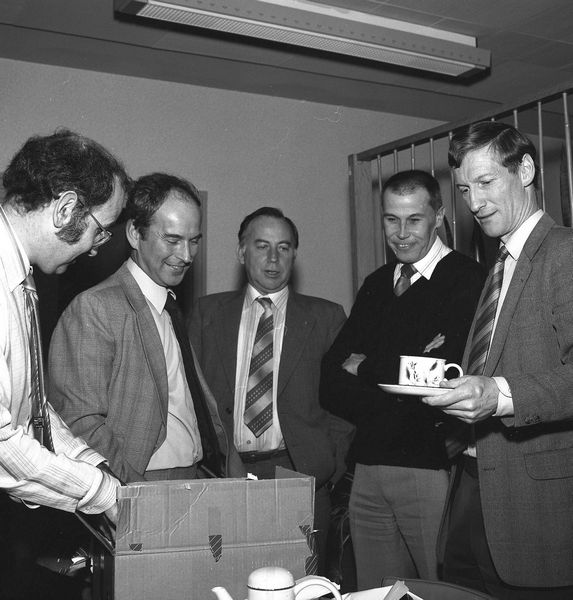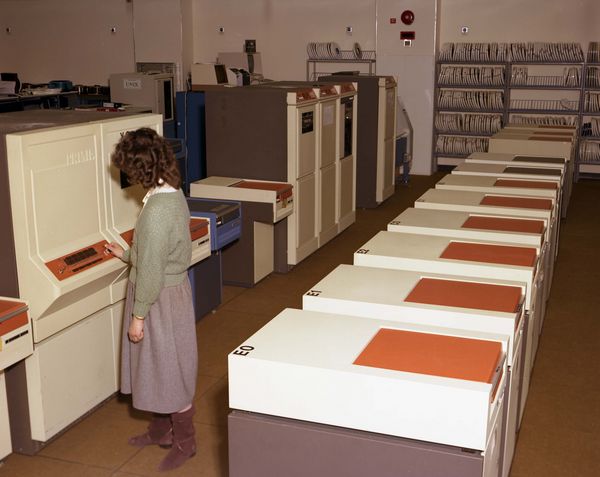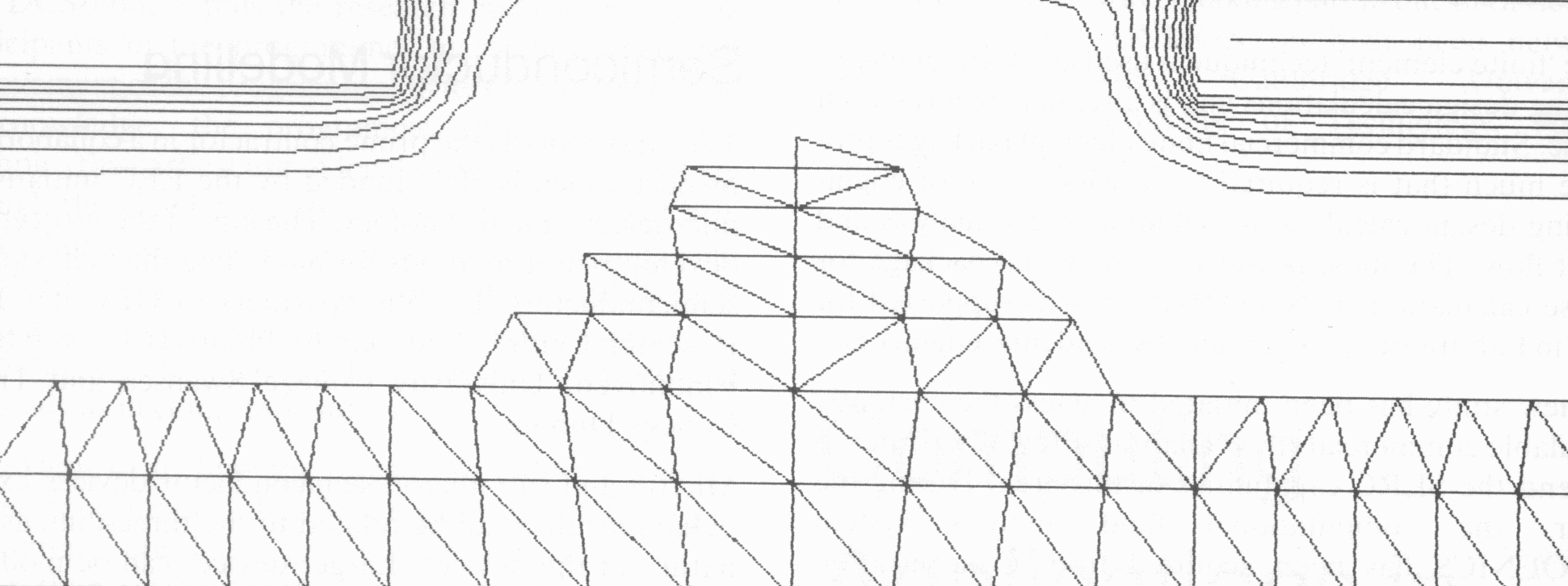

The main areas of activity are:
As part of the Alvey programme In Software Engineering (SE) and Intelligent Knowledge-Based Systems (IKBS), GEC Series 63s and VAX 8750s have been installed at:
Also, the Alvey project ASPECT is being undertaken at Newcastle University using a 63. This will be treated as an Infrastructure machine for management purposes.
The objective of the Infrastructure provision is to allow SE and IKBS researchers access to UNIX systems to run special software such as LISP, PROLOG, HOPE, ML. Berkeley 4.2 UNIX is the standard system used for research in these areas in the USA. Consequently, five VAX systems running Berkeley 4.2 have been installed to enable software, to be imported to and exported from the Series 63 systems, to be made rapidly available. Both RAL and ERCC have been collaborating with GEC to mount UNIX. The version currently running is System III, but this will shortly change to System V. The Infrastructure is managed centrally by RAL, which distributes software to sites and incorporates the extra software required. Each site has its own manager who, as well as operating the machines, provides support for local users and forms the main communication path between RAL and the site. Managers also actively contribute to the various software projects.
The major computing power is provided by the IBM complex. The Amdahl version of UNIX known as UTS runs under the VM operating system. This has been mounted on the Atlas 10, and versions of CPROLOG and FRANZLISP incorporated, allowing very large processor-intensive jobs to be run.
In order to provide viable central support for the Infrastructure and facilitate communication amongst the community, there was a need to connect all the UNIX machines to the Wide Area Network. In most cases, this has been achieved using software written at the University of York, with a front-end processor known as a FALCON or York box. Much effort has been expended in installing the hardware and testing the software.
Local area networking is proving much more difficult. International standards are still emerging and software is scarce. Individual Infrastructure sites have different requirements and it is not clear how best to solve the problem. Work is in hand to connect the RAL machines to ETHERNET and various protocols are being evaluated. This has also proved helpful to the Single User System Common Base Programme, providing assistance in the evaluation of Single User Systems which are candidates for addition to the Common Base.
Following the report of the SERC Computer Review Working Party, some rationalisation of the Interactive Computer Facility (ICF) was necessary to satisfy the changing requirements of the user community; this was largely completed during the year, and universities are now contributing a significant proportion of the recurrent costs. Enhancements to some PRIME and GEC machines have been made and arrangements agreed to withdraw the GEC machines at Newcastle, Cranfield and Queen Mary College, London.

To meet increased demands for facilities, significant hardware changes have occurred during the year with PRIME 9950s replacing PRIME 750s at UMIST and RAL. A PRIME 9650 replaced a PRIME 400 at Nottingham and PRIME 2250s have been installed and supported at Bath, Imperial College and at Hatfield and Middlesex Polytechnics. The upgrades at UMIST and Nottingham were jointly funded by ICF and the universities. Additional memory has been added to all other sites and, at some, disk space upgrades have been funded.

A VAX 11/8750 has been purchased to run BERKELEY 4.2 UNIX to enable the ICF Applications Group (Technology Division) to begin to transfer their applications software to the UNIX environment.
Improvements have been made to MAIL during the year and LISP/PROLOG and C are now fully supported. System support for UNIX and the PRIMEs is not now expected until early 1985.
The SERC PRIME Applications Manual has been published and includes major sections on graphics, languages and networks. The PRIME Beginners Manual is now available and this has proved to be of significant value to new users.
The 16-bit 4070 systems at Glasgow and Heriot-Watt have been replaced by 32-bit GEC 4180 systems with the universities making a contribution to the upgrade. Two new versions of the OS4000 Operating System have been released and FTP now replaces HASP for inter-machine communication. A locally-written Screen Editor, available for a restricted subset of terminals, has been made available. A Cambridge Ring now supports communication between the four RAL GEC machines.
A revised and updated Reference Manual No 1 has been issued.
Support has continued with the registration of SERC Users and monitoring of machine usage. With the planned termination of service at some GEC sites, some users have been allocated facilities on alternative machines.
Concerted efforts are being made to improve the efficiency of the application, assessment and control procedures, with the ICF local MUM Managers having greater involvement. RAL staff will retain overall responsibility but the service to users should be more responsive.
The availability at reasonable cost of single user systems - devices which offer vastly improved man-machine interaction via high quality graphics and interaction devices such as the mouse/tablet combination as well as significant CPU and disc storage - caused SERC to define a Common Base Policy. This policy recommends standard software, hardware and communications with the aim of preventing the inevitable software duplication which would result otherwise. The Common Base as originally defined consists of software (the UNIX operating system, Fortran 77 and Pascal compilers, and the GKS graphics system), communications (X25 and JNT Co loured Book Wide Area Network Protocols, and Cambridge Ring Local Area Network), and hardware (the ICL PERQ).
ICL has completely restructured the PERQ operation, concentrating all PERQ developments at Kidsgrove and closing the software development centre at Dalkeith. In the short term, an inevitable interruption to software development occurred but the longer-term benefits to the programme should be considerable. The original PERQ1 machine has been replaced by the computationally-similar PERQ2 which, as well as being cheaper and quieter, offers a larger-capacity disc (35 Mb compared with 24 Mb) and options of 2 Mb main memory and an A3 display retaining the 100 pixels per inch resolution of the A4 display.
During the year, the PNX2 operating system became available. This required a hardware upgrade for the whole PERQ 1 user base which took a significant time to complete. The new version of PNX showed a major improvement over the previous version (PNX 1.5); in particular, compilation performance was improved by a factor of three, and a similar factor was obtained in single-precision floating-point performance. Other features include improved window-manager functionality and performance, a source level debugger, UNIX System III utilities such as the source code control system (SCCS), and the SPY screen editor developed at RAL under the ICL/SERC collaboration agreement. Other software developments include GKS (a joint RAL/ICL project), the NAG Library, Fortran libraries such as SPARSPAK, and software tools such as the GUIDE documentation browser and OOPS, a window-orientated debugging system. X25 Wide Area Network connections in service rather than prototype form became available during the year, as did the first version of the Basic Block Protocol for the PERQ/Cambridge Ring connection. The Common Base support team has now installed, is maintaining and offering support for 150 PERQ1s and PERQ2s. Cooperation with QMC and SWURCC, with the aim of providing as uniform a service as possible for all academic PERQs, has increased with regular meetings being held between the support teams. In September, a User Forum was held with about 70 attending from the user community.
The rapidly-evolving Single-User System market has been monitored for some time, with over 120 vendors receiving an outline Operational Requirement (OR). From the 80 or so replies, 10 firms were selected to receive a more detailed OR. The responses to the OR were assessed and much of the summer and early autumn was spent by the RAL team evaluating these machines. The evaluation was also carried out on behalf of the Alvey community, in cooperation with the Artificial Intelligence Department at Edinburgh University.
In August 1983 a new Software Engineering Group was formed to:
The Group's research interests are formal specification and mechanically-assisted theorem-proving. A research project investigating the problems of formally specifying the GKS graphics ISO standard has been approved and is under way.
The DCS Programme has been a major influence in the way Information Technology research is organised in the UK and, as RAL has played a major role in DCS, a comprehensive summary is given.
DCS was a specially-promoted programme launched by the Engineering Board in 1977 and terminated in September 1984 with a conference at the University of Sussex, attended by some 180 delegates from academe and industry.
As the programme evolved, projects clustered around ways in which to structure distributed systems:
The table below illustrates the scale and breadth of involvement which DCS has created and managed:
| Description | Number |
|---|---|
| Normal research grants | 103 |
| Cooperative grants | 3 |
| Visiting Fellowships | 20 |
| Universities holding DCS grants | 23 |
| Polytechnics holding DCS grants | 3 |
| Number of research staff employed (approx) | 150 |
| Total value of grants awarded | £6.3M |
| Expenditure on coordination | £0.4M |
| Expenditure on infrastructure | £2.0 |
| Total expenditure | £8.7M |
| Fractional spend on infrastructure | 23% |
| Fractional spend on coordination | 4.6% |
The major achievement of the DCS programme has been the creation of a strong research community. DCS has formed new research groups where none existed and enabled a number of young researchers to become established in the field much more rapidly than would otherwise have been the case. The human interface between the DCS Panel and its clients, through the coordinators, has been a key factor. The establishment of the UK's strong position in declarative systems research owes much to DCS.
Now that the DCS programme has ended, the work funded by DCS will continue through either the Alvey Directorate or the SERC Computing Science Subcommittee as appropriate. Research ideas fostered by DCS are appearing in products and prototypes in the Alvey programme. Many of the lessons learned in the DCS programme have been incorporated in the Alvey programme; for example, the need for full-time technically competent staff to manage the programme and the need for infrastructure in terms of both a workshop programme and computing resources.
The DCS books, plus the research publications of the participants in the programme, mark the intellectual achievement of the programme. In terms of contribution to knowledge, the programme should claim, for example, the earliest use of local networking technology through the Cambridge Ring, the development of new architectural techniques, particularly for Dataflow and Graph Reduction systems, creation of some of the first techniques for specifying and describing concurrent computation, and methods for performance modelling and analysis in complex systems.
The extent of technology transfer to industry is much harder to estimate. The main products of the DCS programme are ideas and demonstrations of ideas, rather than systems that can, and should, be turned directly into commercial products. Trained manpower has also been a major product of the programme and it is through this avenue that technology transfer is best being achieved.
The UNIVERSE high-speed network ceased to function at the end of December 1983 when the Orbital Test Satellite (OTS) was taken out of service. The UNIVERSE project itself terminated at the end of September 1984. During the last months of 1983, there was an intense period of activity during which a great deal of performance data was taken on the network and on many of the applications experiments. The early part of this year was spent in analysing this data and the results of all the experiments have appeared in a set of twenty reports, together with descriptions of the network and its protocols and the infrastructure components developed for the project. Four papers were given at the ACM Montreal Conference on Communications Architectures and Protocols' and there has been considerable North American interest in the project. In particular, the Atmospheric Research community has a project to link some 60 universities with the National Centre for Atmospheric Research at Boulder into a high-speed computer network using a satellite for wide-area transmission.
Work has continued on the design and construction of a new high-performance satellite access controller. This was designed as part of the UNIVERSE project and some testing of a prototype carried out during the last month of operation of OTS. The work is being continued under a SERC grant involving Loughborough University of Technology, Manchester University and RAL. It is hoped to make tests of the complete system (access controller, 8 Mbit/sec digital modem and encoders) using a satellite in 1985.
Towards the end of the year, two follow-on projects from UNIVERSE were accepted by the Alvey Directorate. RAL will be taking part in one of these, the four-year project UNISON on high-speed network applications, with Cambridge University, Loughborough University of Technology, Acorn Computers and Logica.
RAL provides infrastructure for engineering applications software over a wide range of disciplines. There were over 20,000 accesses of this software this year. The main aim has been to provide a distributed system of supported software available to users of the SERC network of interactive and batch computers. A common theme of the work is mathematical and numerical modelling supported strongly by local expertise. In addition, there are a number of development and research projects in areas where the Laboratory has expertise, eg electromagnetics and semiconductor modelling. The Laboratory is advised by a number of Special Interest Groups (SIGs) in the identification of the requirements of the research community.
One of the most important aspects of any applications software package is the user interface. Supplying a good interface requires a large amount of software that is independent of the particular application. In order to encourage researchers to produce usable applications software packages, a range of tools is provided, including:
The SIG relating to this topic has recently instigated
The finite element technique is used as a tool for engineering design calculations and is also an active research topic. Standard commercial finite element packages provide much that is required for a wide range of engineering design calculations including stress analysis and heat flow. The most powerful commercial package for these calculations is NASTRAN; this is supported for use in Laboratory projects and by academic engineers.
A new study has been initiated to assess the currently available commercial stress analysis software in order to extend the SERC capabilities in this area. During the year, the computational fluid analysis system PHOENICS has been acquired from Concentration Heat and Momentum Ltd under special arrangements for SERC users.
Research opportunities arc plentiful as many calculations cannot be performed by commercial systems. To satisfy these needs. a library of finite element software is provided by the Laboratory and distributed by Numerical Algorithms Group Ltd (Oxford). The library enables researchers to create efficiently new finite element software packages that are well structured. This in turn has led to a fruitful exchange of software between different groups.
Currently, the library is being used for electromagnetic and semiconductor modelling, building design, machine tool design and fluid flow calculations. These developments have produced new software which has been included in the library.
RAL has also organised a series of meetings on computational modelling on behalf of the SERC community in order to identify and quantify future research topics and organisational requirements.
The Laboratory's suite of electromagnetic software packages has recently been enhanced by the inclusion of a new package CARMEN which solves the three dimensional time-harmonic eddy current problem and is at present undergoing final tests on a variety of problems. One of its more important applications would be in the area of non-destructive testing. Also under development is a technique for analysing complex surfaces which simplifies the calculation of their topological properties. This will then greatly increase the class of problems solvable using the present software. While the university community makes heavy use of these packages. copies are also being sold to non-university customers and all the packages are available commercially from British Technology Group.
A new collaborative project between RAL, Imperial College and Bath University on 3D eddy currents has been agreed, in which present methods will be extended to include non-linear and transient phenomena.
The laboratory is the prime contractor in a collaborative project which is 50% funded by the EEC initiative in microelectronic technology. The aim of the project is to develop better methods for modelling the behaviour of semiconductors. The other partners are GEC at its Hirst Research Centre. Nederlandse Philips Bedrijven BY at Eindhoven. University College Swansea and Trinity College Dublin.
Micron and sub-micron semiconductor devices exhibit behaviour that can be related to the three-dimensional nature of the devices. Larger devices can be modelled accurately in two dimensions and numerical methods are available for such calculations (Fig 2.4). These methods are extremely expensive for calculations in three dimensions.
At RAL, software has been developed to model the behaviour of 2D semiconductor devices. Particular attention has been paid to the generation and run-time adaptation of the finite clement mesh. so that errors are minimised and the rapid variation of the dependent variables is adequately modelled.
Two further projects in this area have been approved under the Alvey initiative, viz a project to develop and implement robust computer software for 2D device simulation using validated models, and a similar project on device process modelling.
